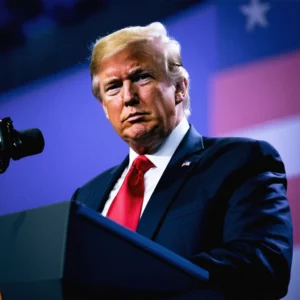
Introduction: A Dual-Purpose Economic Strategy
The current geopolitical crisis demands strategic economic actions that serve multiple purposes. First, the United States can collect revenue using tariffs on international trade. Second, the U.S. can apply strong sanctions on oil and gas exports from Russia. In this way, policymakers respond assertively while pursuing domestic prosperity. Moreover, American leaders combine traditional economic tools with new diplomatic mechanisms. Consequently, these coordinated measures pressure Russia and motivate a lasting end to the conflict in Ukraine.
Economic Foundations of the Plan
Tariffs as a Revenue Stream
U.S. policymakers impose tariffs not only to balance trade deficits but also to generate necessary funds. In addition, tariffs work as a deterrent by decreasing the cost competitiveness of targeted goods. Furthermore, the tariff system increases domestic revenues while driving international buyers to reconsider their alliances. Notably, the tariff policy allows flexibility. For instance, officials adjust tariff rates depending on economic trends and geopolitical developments.
Key features of tariff implementation include:
- Increased government revenue
- Pressure on adversary economic interests
- Enhanced domestic production
These measures support American industry and signal firm resolve.
Sanctions on Oil and Gas: A Strategic Leverage
The United States targets Russia on the oil and gas fronts by proposing sanctions. Initially, the U.S. announces the intent to tightly regulate energy sales. Moreover, decision-makers emphasize that these proposals often complement tariff policies. As a result, Russia’s revenue streams start to decrease sharply. Additionally, strong sanctions force Russia to rethink its military strategies in Ukraine. Transitional policies further integrate economic and diplomatic responses. Ultimately, the dual approach strengthens both deterrence and economic gain.
- Deploying well-structured tariffs
- Imposing calibrated sanctions on energy exports
- Maintaining pressure through systematic reviews
These discrete tactics help secure American interests while punishing Russian economic aggressions.
Benefits for America and the International Community
Economic and Diplomatic Gains
American strategies yield multiple benefits. Therefore, tariffs boost national income immediately while sanctions send signals internationally. Inexact but persuasive data demonstrate that alternative energy policies also develop. Additionally, these economic instruments incentivize reforms not only in Russia but also among U.S. trade partners. Consequently, a resurgent domestic market benefits from stable job growth and attractive investment opportunities. Simultaneously, American allies appreciate the decisive measures that uphold a stable global order. Arguably, such a dual-nuanced approach rarely appears simultaneously effective.
The strategic plan possesses several advantages, as shown in the table below:
| Aspect | Benefit |
|---|---|
| Revenue Generation | Increased government funds from tariffs |
| Diplomatic Pressure | Enhanced leverage against Russian policies |
| Economic Rebalancing | Promotion of domestic industries |
| International Stability | Support for allied nations and markets |
This table illustrates how diverse measures serve the dual purpose of economic benefit and political influence.
Operational Steps for Implementation
American authorities create systematic steps to implement the plan. First, they conduct comprehensive market research. Then, officials engage in robust diplomatic overtures. Next, regulatory frameworks clear the way for new tariffs and sanctions. Furthermore, agencies monitor international markets continuously. In this structured environment, American policymakers sculpt proactive strategies that benefit the national economy and international security. The implementation phases also include stakeholder meetings and public consultations. Each advance further develops the integrated policy approach.
Practically, the steps follow a clear timeline:
- Initial analysis of international trade data
- Drafting legislative measures at the governmental level
- Engaging international partners through forums and bilateral discussions
- Rolling out tariffs and enforcing sanctions simultaneously
- Review and recalibration every quarter
These steps maintain transparency while ensuring a robust and dynamic approach.
Challenges and Future Prospects
Potential Economic Backlash and Mitigation Strategies
Implementing these robust economic measures might trigger aggressive countermeasures on the international stage. Therefore, U.S. officials prepare for potential economic backlash. Moreover, they consider diverse scenarios that include retaliatory tariffs and market disruptions. However, the strategy anticipates such risks through risk management and contingency planning. Additionally, American businesses receive consultation support to navigate volatile market conditions. Thus, the integrated plan accommodates both hard and soft measures to stabilize the economy when pressures arise. Each step aims to adapt proactively and respond efficiently.
Risk mitigation includes the following tactics:
- Constant market monitoring and analysis
- Strategic partnerships with allied nations
- Pre-established contingency funds
- Regular stakeholder meetings to quickly identify risks
These measures ensure that U.S. strategies remain flexible and responsive amid uncertainties.
The Road Ahead: Diplomatic and Economic Synergy
American policymakers view the strategy as a blueprint for long-term transformation. Consequently, these initiatives create diplomatic synergies and open opportunities for reform. Moreover, the plan encourages both domestic and international investments. Importantly, the United States establishes a dialogue that challenges adversarial policies and promotes peace in Ukraine. Additionally, robust economic measures foster stability and uplift global economic governance. In conclusion, the coherent strategy brings together economic imperative and political relevancy. Leaders express optimism about the combined benefits that foster an environment of accountability and mutual progress.
To summarize, the roadmap emphasizes:
- Strong economic fundamentals
- Clear diplomatic communication
- Adaptive measures to embrace future challenges
Ultimately, officials believe that the plan will lead the way toward an era of economic stability, resilient trade policies, and a peaceful geopolitical landscape.




